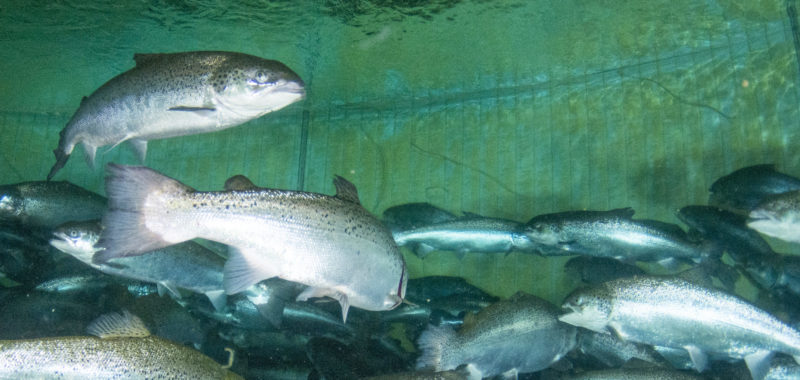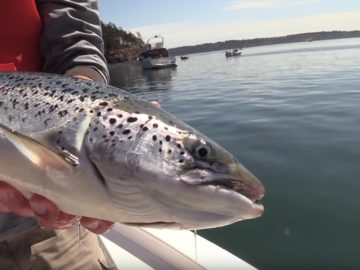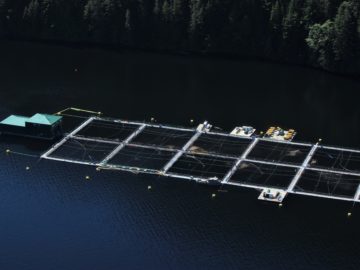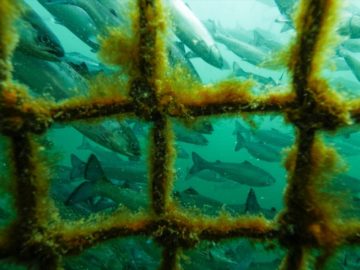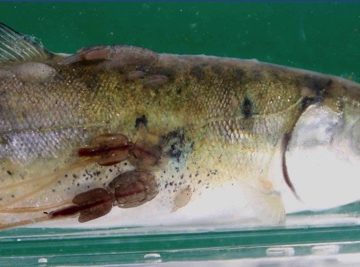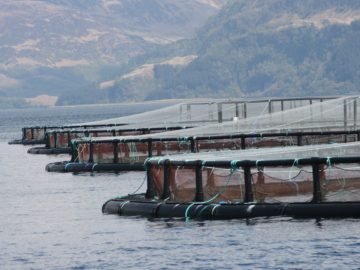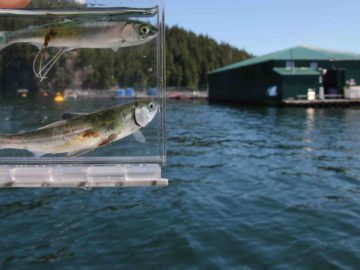I recently attended an Aquaculture 101 event in Vancouver hosted by chef and aquaculture advocate Ned Bell. It brought together B.C. chefs and others to dispel the idea that all farmed seafood is bad. Bell is concerned that when it comes to aquaculture and Vancouver’s higher-end restaurants “farm” has become a four-letter word.
Open net-pen farmed Atlantic salmon aquaculture in B.C. operating in First Nations territories without consent has been getting bad press lately. Chefs have been vocal in their opposition to the industry, with more than 50 signing an open letter against farms operating in unceded First Nations territories in the Broughton Archipelago. The Chefs’ Table Society of B.C. is also on record as voicing its disapproval, and the Union of B.C. Municipalities passed a resolution urging the province to shift the industry to closed systems.
Speakers at the event pointed to the benefits of farmed seafood and the many sustainable options available. Sustainably farmed seafood, it was proposed, was in danger of drowning in the wake of the open net-pen fish farm debate.
B.C. prides itself for its wide range of sustainable and local farmed products. Operators who attended the meeting included Berezan Shrimp Company (closed-containment white shrimp), Gindara Sablefish (open-net pen sablefish), Kuterra (closed-containment Atlantic salmon), Northern Divine (closed-containment sturgeon, caviar), Road 17 Arctic Char (closed-containment arctic char) and West Creek (closed-containment coho salmon). Locally and globally farmed shellfish (mussels, clams and oysters) are almost always a sustainable option.
With half of global seafood coming from aquaculture, limited options for extracting more seafood from the wild and increasing consumer demand, aquaculture must be part of a constructive discussion on how to move the seafood industry forward. It’s time to move beyond the idea that all farmed seafood is bad. It’s not – something that SeaChoice groups have long advocated for. That doesn’t mean it’s all good, especially if, as in B.C.’s open net-pen operations, it risks the health of migrating wild salmon.
Aquaculture, like wild fisheries, can be assessed as good, bad or in between. It depends on where you set the bar, and different groups have different bars. In Canada, we can choose among the Ocean Wise Seafood Program, Seafood Watch, Aquaculture Stewardship Council and Best Aquaculture Practices. Each bar considers varying combinations of environmental impacts and social sustainability. Some bars are higher, some lower.
SeaChoice has a bar for B.C. open net-pen farmed salmon: we do not support them based on documented environmental impacts, the absence of First Nations’ consent and failure to apply the precautionary principle on issues for which the jury is still out, such as disease transmission. Industry should have the burden of proving an absence of environmental impact, not wild salmon. Wild salmon are under a myriad of pressures and all measures should be taken to help them, including but not limited to reducing the threat of open net-pen fish farms. We’ve brought forward our evidence for disagreeing with Seafood Watch on its bar with respect to open net-pen farmed salmon and our concerns that the Aquaculture Stewardship Council’s bar is being lowered from “best practice” to rewarding business as usual.
But that is our bar. If chefs want to support good aquaculture practices they must decide on their own standards and source seafood accordingly. This will involve homework to choose credible sustainable seafood options and understand standards, which can be complicated and technical and not always rigorously and consistently applied. SeaChoice proactively engages with eco-label initiatives to improve labelling standards and ensure certifications remain credible to make the work a bit easier. Some sustainably raised farmed seafood remains unranked, and high costs involved with certification processes become barriers for small-scale operators. Research is needed to seek them out.
On a side note, this is not a debate about how we can improve food security at home or abroad. Farmed salmon and the other high-end examples mentioned above come at too high a cost for the average consumer, let alone the world’s poor looking for affordable protein choices. The nuances of sourcing and price better fit the upscale markets chefs cater to.
This conversation is about whether B.C. chefs should serve farmed seafood. If chefs choose to serve it, they must advertise it honestly. Better yet, they should tell the story of how that seafood got to their customers’ plates.
